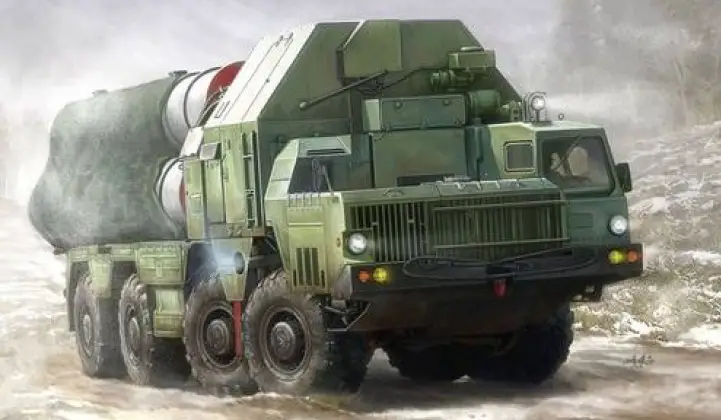<p >The Indian Air Force will in 2025 receive its last of five regiments of Russian S-400 long range air defence systems, thus completing an $5.43 billion dollar order placed in October 2018 intended to revolutionise the service’s surface to air capabilities. Each regiment is formed of two battalions, meaning India will in total field ten battalions each of which deploys eight missile launchers.&nbsp;Speaking at a recent press conference,&nbsp; head of the Air Force Chief Air Marshal Amar Preet Singh has confirmed that deliveries are expected to be completed next year, meaning that two new regiments of S-400s will be delivered within the next fourteen and a half months. India was previously <a href=" >expected to receive</a> its last two regiments’ worth of S-400s <a href=" >in 2024</a>, with Moscow and Delhi reported to have reached an agreement to delay deliveries due to urgent Russian requirements to activate more systems in its own air force amid an ongoing war with Ukraine and its Western allies. Preceding the outbreak of full scale hostilities in Ukraine, Russia had&nbsp;<a href=" >accelerated deliveries</a>&nbsp;of S-400s in response to requests from Delhi.&nbsp;</p><p ><img src=" ></p><p >The Russian defence sector has been able to produce sufficient S-400 systems to both rapidly expand its domestic arsenal and to complete simultaneous exports to&nbsp;<a href=" href=" largely as a result of significant investments in the 2010s&nbsp;which allowed air defence assets to be&nbsp;<a href=" on a far larger scale</a>&nbsp;from the late 2010s.&nbsp;Construction of new factories and modernisation of older ones has facilitated a&nbsp;<a href=" scale of production</a>&nbsp;allowing&nbsp;<a href=" regiments</a>&nbsp;worth of S-400s to be produced annually. The most notable facilities receiving such investment include a new wing of the Obukhov Plant in St. Petersburg, the Avitek Plant in Kirov which was throughly modernised, and the NMP Plant in Nizhniy Novgorod.&nbsp;The&nbsp;<a href=" S-400 regiment&nbsp;</a>to India was&nbsp;<a href=" near its western border&nbsp;</a>with Pakistan in December 2021, with a second regiment delivered the&nbsp;<a href=" year stationed</a>&nbsp;near the northern border with China.&nbsp;The third regiment began deliveries in January 2023, with no new regiments having been delivered for almost two years.</p><p ><img src=" title="Final Assembly of Missile Launchers For S-400 Systems"></p><p >The Russian Air Force’s reliance on the S-400 is extreme and unprecedented in the country’s history, with over 20 regiments having been acquired over the past two decades. The Defence Ministry has spent considerably more acquiring S-400s than it has on acquisitions of all classes of tactical combat jets combined over the past two decades. This is despite the fact that the S-400 is only one of multiple long range air defence systems in production in the country today, alongside the <a href=" the&nbsp;<a href=" and the<a href=" target="_blank"> A-235</a>. The scale of acquisitions is largely due to the S-400’s perceived much greater cost effectiveness for air defence duties, with the highly road mobile assets not being vulnerable to <a href=" target="_blank">attacks on</a> centralised air bases, while their operational and training costs are negligible compared to fighters and interceptors. Although the Soviet Union was initially set to field systems with similar capabilities from the late 1990s, followed by its first high performance fifth generation fighters in the early 2000s, Russia’s inability to develop a similarly competitive fifth generation fighter to the <a href=" target="_blank">Soviet MiG 1.42</a>, the development of which ended after the USSR’s disintegration, only made the fielding of cutting edge ground based air defence assets more important to compensate for the declining standing of its fighter fleet.&nbsp;</p><p ><img src=" title="Surface to Air Missile Launch From S-400 System"></p><p >For the Indian Air Force, much like for the Russian Air Force, the lack of fifth generation fighter aircraft, or of similarly capable <a href=" target="_blank">fourth generation fighters</a> to neighbouring China, makes the S-400 highly prized as an asymmetric means of defending its airspace. While Chinese deployments of its <a href=" target="_blank">J-20 fifth generation fighters </a>near the Sino-Indian border have been <a href=" target="_blank">highly limited</a>, with Beijing seeking to limit escalation in the region, the J-20’s lighter counterpart the FC-31 is reportedly set to be <a href=" target="_blank">exported to Pakistan </a>in the second half of the 2020s. The FC-31 will provide Pakistani air units with tremendous superiority over anything in the Indian fleet, with the S-400’s advanced capabilities against stealth aircraft expected to be highly prized to counter the Chinese-supplied jets. As the largest foreign operator of the S-400, India is currently considered a leading potential client for the 40N6 surface to air missile which can be integrated onto the systems, and increases their engagement ranges to a near unrivalled 400 kilometres even against low flying targets. The system otherwise is limited to a maximum firing range of 250 kilometres using the 48N6DM. The 40N6 has already been exported to China for its two S-400 regiments, and was first confirmed to have been <a href=" >combat tested </a>in the Ukrainian theatre in November 2023.&nbsp;</p>
A New Era For India’s Long Range Air Defence: Ten Full S-400 Missile Battalions Will Be Operational Next Year

